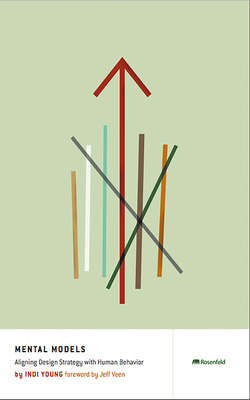Читать книгу Mental Models - Indi Young - Страница 13
На сайте Литреса книга снята с продажи.
Determine Your Research Method
ОглавлениеThe best way to choose a user research method is to know what each technique is good for. Most user research techniques can be categorized into three groups: preference, evaluative, and generative. The first of these groups is the most widespread—preference. Not only do you see marketing departments sending out surveys and conducting focus groups, but you also see opinion polls flourishing in the media. Preference research is the most common type of customer research. It is perfect for canvassing a large number of people to determine how the product will be accepted or preferred by people. In Figure 2.1, you will see a sampling of techniques that support preference research. In the last column, there is a set of uses for preference research, such as branding. You’ll notice that you don’t use preference research to design interaction or information architecture. And, you don’t use it to find out how well a solution works.
In the second row of Figure 2.1 you will see evaluative research. In the past few years, it has become more common to hear decision-makers call for product testing before releasing an item to the market. This request is also fairly frequent when the “market” is a large internal organization and releasing an efficiency tool can make a difference in the bottom line. In the table, you will see that “card sort” and “customer feedback” appear for evaluative research as well as preference research. Card sorting[1] can be used for a wide variety of purposes. The feedback you get from customers also ranges from complaints to opinions about how to fix your product. Note that the uses for evaluative research are specific: You can improve existing interaction functionality and the visual design of the screen layout for software, hard goods, or a service. You also can find out which labels, nomenclature, and instructions make the most sense to the user.
| DATA | TECHNIQUE | USES |
| Preference Opinions, likes, desires | Survey Focus Group Mood Boards Preference Interview Card Sort Customer Feedback | Visual Design Branding Market Analysis Advertising Campaigns |
| Evaluative What is understood or accomplished with a tool | Usability Test Log Analysis Search Analytics Card Sort Customer Feedback | Interaction Functionality Screen Layout Nomenclature Information Architecture |
| Generative Mental environment in which things get done | Non-Directed Interview Contextual Inquiry Mental Model Ethnography Diary | Navigation & Flow Interaction Design Alignment & Gap Analysis Contextual Information Contextual Marketing |
Figure 2.1. http://flickr.com/photos/rosenfeldmedia/2159500714
This User Research Types matrix will help you decide which research to use.
Generative research has been around for a long time, though its application to software strategy is more obscure. Generative research explores the mind space of someone doing something. It is research that is conducted before the ideation phase.[2] It focuses on a higher level than evaluative research, asking the end purpose for every tool used rather than the details of how well a specific tool is applied. Open-ended research methods, such as ethnography, non-directed interviews, and diaries, allow researchers to create a framework based on data from participants. This framework then can be used to guide information architecture, interaction design, and contextual placement of information and products.
For example, you would use generative research to find out how people buy books, which usually doesn’t differ based on age, gender, interests, or preferences. You would use preference research to find out which book a person would buy. However, the act of buying is not that different: Look for the book, make sure it’s the right choice, and then purchase it. Mental models generated with generative data and aligned with proposed information and functionality can deliver an unambiguous picture of how well a solution supports the user through gap analysis.
Building Products Based on Preference Research is Like Building a Kitchen from a Stack of Magazine Clippings
Imagine you are an architect talking to a couple who wants a kitchen remodel. They bring you a stack of magazine clippings with photos of kitchens they like. They talk about how they want to cook gourmet meals for friends with fresh produce from the farmer’s market. Your next step is to start drafting blueprints based on all this input, plus the information you already know, such as the efficiency of a work triangle in a kitchen. But imagine if you were not allowed to draw blueprints, and instead you were required to hand over the stack of magazine clippings to the contractor. Assume the contractor has never built a kitchen before, so he has no experience with kitchen functionality and work triangles. Without your skills at interpreting client input into a remodeling plan, the project would stall.
Asking engineers to build a product based on a stack of preferences is just like asking a contractor to build a kitchen based on magazine clippings.
Stepping back to a more general, rather than user/consumer, definition of research, Wikipedia defines three main forms of general research methods:
Exploratory research, which structures and identifies new problems
Constructive research, which develops solutions to a problem
Empirical research, which tests the feasibility of a solution using empirical evidence[3]
In a way, mental models embody both exploratory and constructive research, allowing you to derive solutions to problems from the data set as well as structuring where new problems for the next year might lie.
